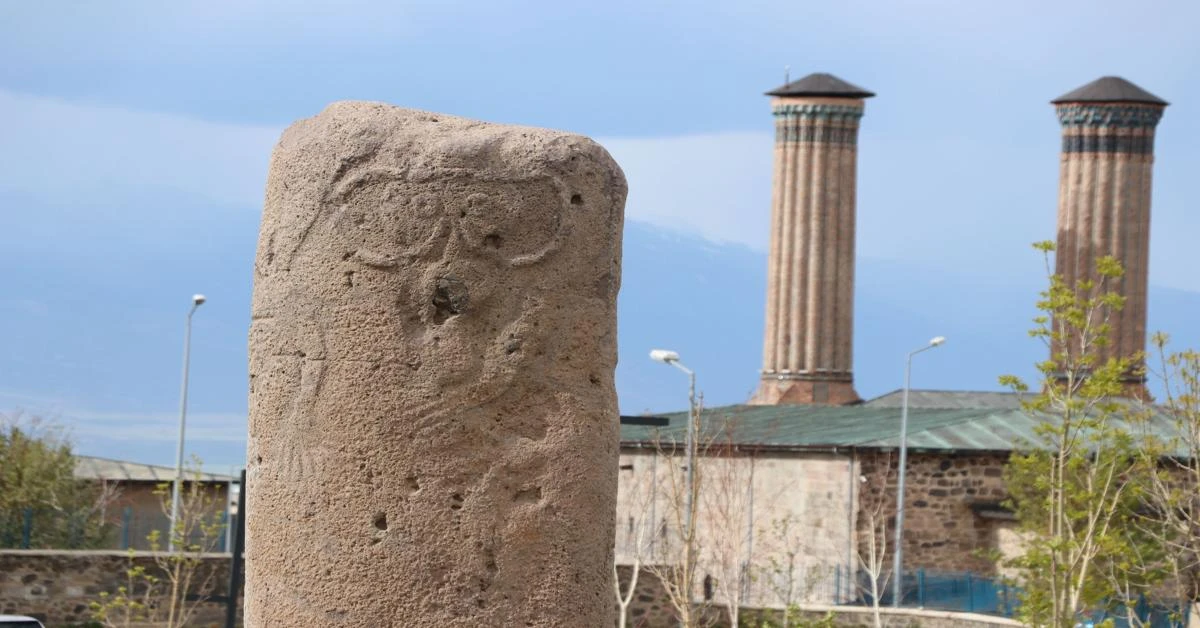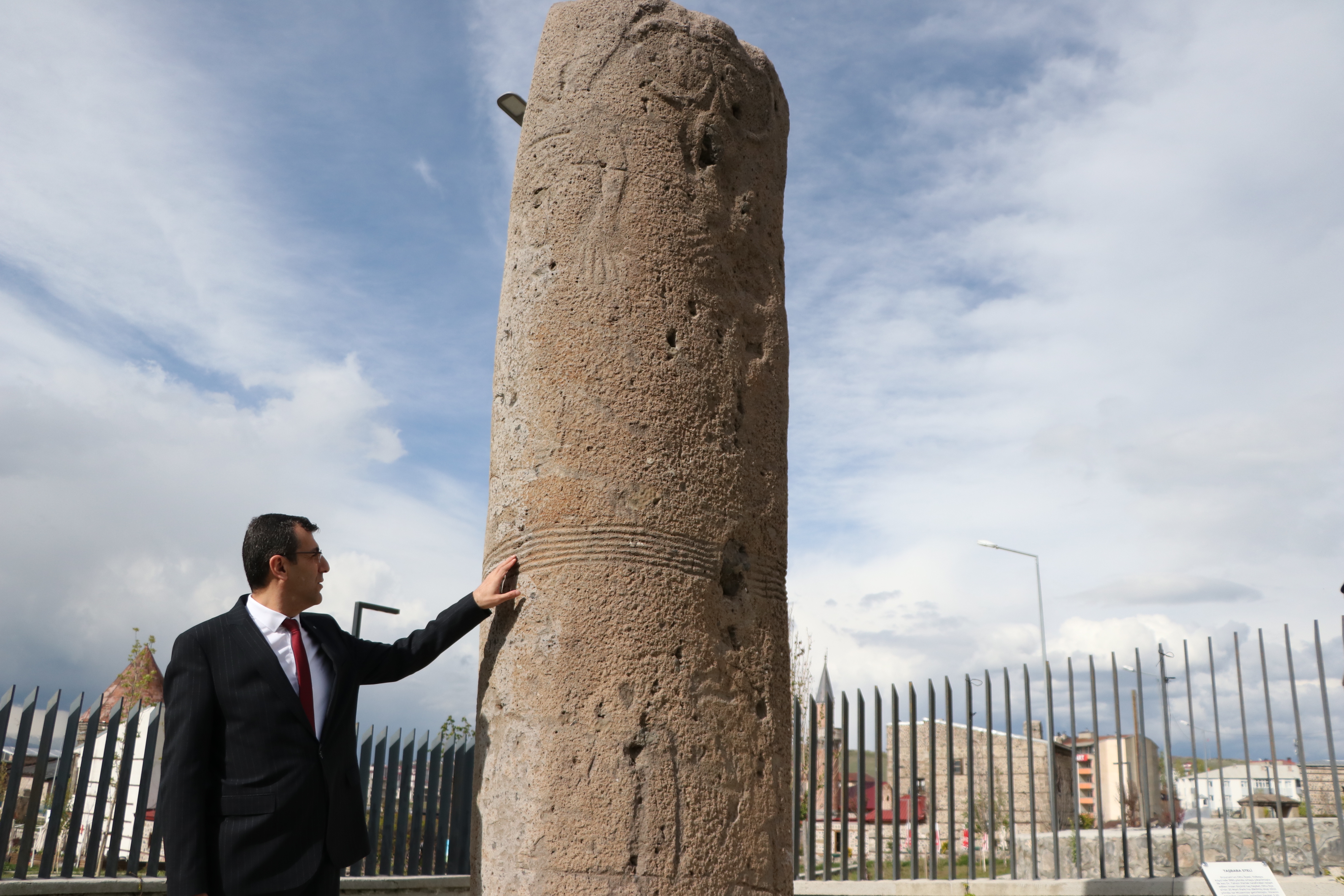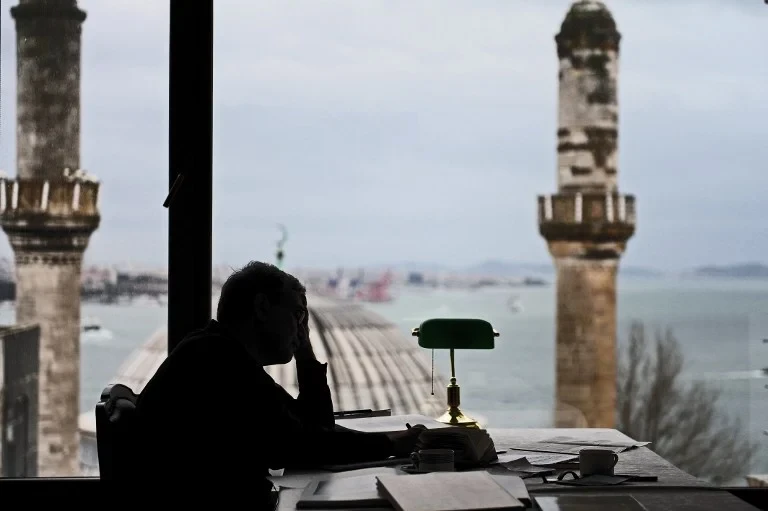Protho-Turkish 6-ton obelisk on display at Erzurum Museum in Türkiye

Erzurum Museum in Türkiye is now displaying a unique 6-ton, 5.2-meter-long obelisk, unearthed during an illegal excavation and believed to date back to 10,000 B.C., marking it as a significant artifact of the Protho-Turks
A 6-ton obelisk, measuring 5.2 meters long and 1.2 meters wide, was discovered during an illegal excavation 29 years ago in Yolboyu Neighborhood of Oltu district.
Initially placed in a school’s garden and later in the municipal park, this ancient artifact features five rows of incised lines on its body, distinct eyes in relief on the head, an open mouth, and downward-extending arms. Following examinations by the General Directorate of Cultural Assets and Museums of the Ministry of Culture and Tourism in 2021, the obelisk was transferred to Erzurum Museum Directorate with the support of the Governorship.

The obelisk, unprecedented in Türkiye in size and weight and, according to archaeologists, dates Turkish history to 10,000 B.C., was placed in the garden of the Erzurum Museum last year after its maintenance and repair.
This significant artifact, showcased in the museum alongside materials spanning human history from ancient times to the present, stands as a rare and valuable piece among the historical treasures of the city.

Erzurum Museum Director archaeologist Husnu Genc told an Anadolu Agency correspondent that the obelisk, unearthed by illegal excavations in 1995, was identified by the late Professor Tahsin Parlak, a faculty member of Ataturk University Faculty of Fine Arts. As a result of the initiatives taken, the stone was placed in the garden of Oltu Vocational High School and then in the Youth Park of Oltu Municipality.
Husnu Genc remarked, “The standing stone represents the legacy of the Protho-Turks in our region. These stone monuments are the most distinct evidence that pre-Islamic Turks, dating back to 10,000 B.C., inhabited this area, particularly in Erzurum and our surrounding region. There are no other examples of such immense stature found elsewhere in our region or country.”
Genc explained that these stones were erected at the head of graves as a tribute to significant figures, including esteemed statesmen who played pivotal roles in the Turkish world or were interred in the kurgans constructed for them.
Source: Newsroom



